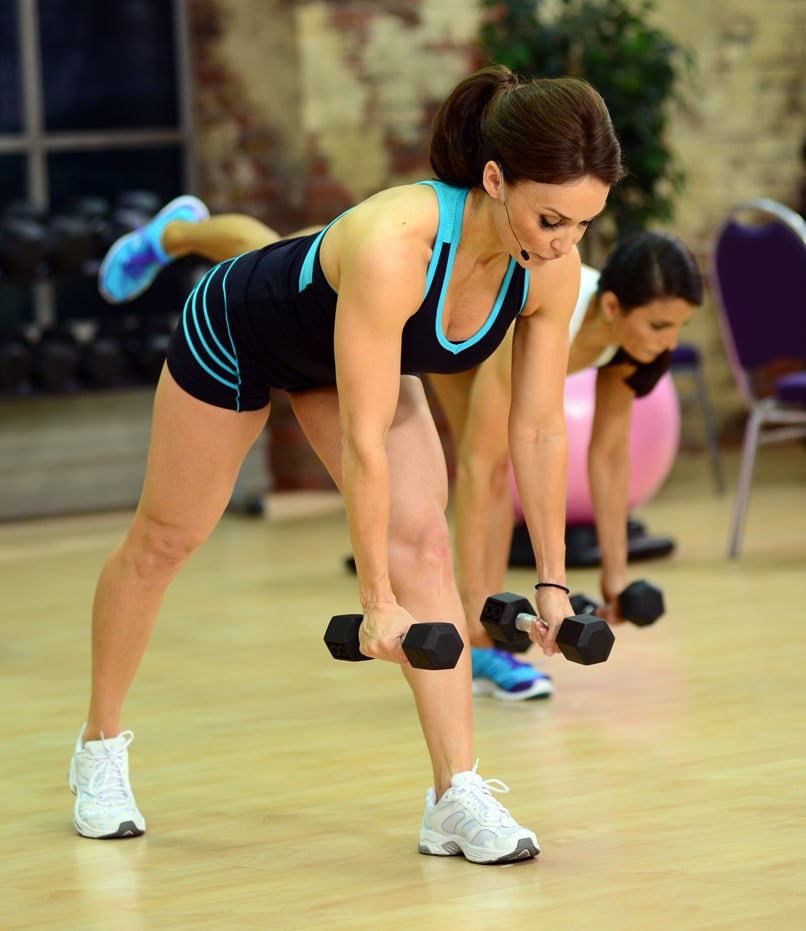
Why Deadlifts Are Important
When you deadlift, the primary muscles you’re working in your lower body are your glutes, gastrocnemius muscles, soleus, and hamstrings – but you’re also working every major muscle in your back and core. At the same time, your forearms and shoulders are getting some conditioning as well. Because it’s a compound exercise that targets a number of muscle groups, especially those in the lower body, it gets your heart rate up too.
Despite its reputation for being a back burner, deadlifts can actually IMPROVE the health of your back. Few other exercises are so effective at working the muscles in your lower back and core. In fact, research shows that deadlifts and squats are better for strengthening your back than targeted back exercises like “supermans” and exercises you do on a stability ball. Deadlifts improve functional fitness too. How many times do you bend over to pick something up? Deadlifts strengthen the muscles you use to do that. They also help to improve posture so you don’t walk around slumped over.
Deadlifts Offer Lots of “Bang for the Buck”
With so many benefits, why do people shy away from them? For one, there’s the perception that deadlifts are for “serious” bodybuilders and they build too much bulk. For most people, that’s not a concern, especially for women, who need challenging compound exercises to build strength and lean body mass. Plus, deadlifts build core and trunk stability. This can help you reduce the risk of injury when doing other weight lifting exercises. If there’s an exercise that gives you multiple benefits with a single exercise, the deadlift fits the bill.
The key to getting the many benefits of the deadlift without back injury is to use proper form. Good form is important for any weight training exercise but it’s critical for the deadlift. Two of the biggest mistakes people make when doing deadlifts is they flex their spine, placing too much pressure on their lower back. To reduce stress on your back, your spine should be in appropriate alignment and your spine straight. No rounding your back!
Another mistake is flexing the neck while doing a deadlift. This happens when people look in the mirror while lifting to monitor their form. This puts too much stress on the cervical spine and upper back. Another common mistake is using a weight that’s too heavy BEFORE perfecting form. It’s best to start with a light weight and concentrate on mastering the movement before increasing the weight. Always move the weight in a slow, controlled manner without jerking it.
It’s also important to avoid rolling your shoulders during a deadlift to reduce the risk of injury to your shoulders and upper back. Your shoulders should be pulled back and held down to create stability in your shoulders and upper back. The deadlift is primarily an exercise for your lower body, core, and back. Keep your shoulders and neck firm and stable.
Deadlifts versus Squats
Some people will argue that the squat is the “real” king of exercises but deadlifts work more muscles than the squat because it activates muscles in the forearm more than squats where you’re passively holding weights in your hands. If you use good form, there’s a place for both of them in your workout. Because these exercises are strenuous, do them on separate days if you’re using heavy resistance.
The Bottom Line?
The key to avoiding back strain or injury with deadlifts is to use proper form. Master form first using a light weight before going heavier. If you deadlift properly, you’ll strengthen not only the muscles in your lower body but your core and back muscles as well. This will help to reduce the risk of injury when you lift or play sports. Plus, it’ll improve your posture when you walk, stand and sit so you’ll place less strain on your back in everyday life. Do deadlifts – but make sure you’re doing them properly.
References:
Simon Frazier University. “Biomechanical Analysis of the Deadlift”
Journal of Strength and Conditioning Research. “Trunk Muscle Activity During Stability Ball and Free Weight Exercises”
Related Articles By Cathe
How Effective Are Deadlifts for Glute Development?
5 Powerful Reasons to Include Deadlifts in Your Fitness Routine
3 Most Effective Full Body Resistance Exercises
Related Cathe Friedrich Workout DVDs:
STS Strength 90 Day Workout Program
All of Cathe’s Strength & Toning Workout DVDs
Total Body Workouts
Lower Body Workouts

